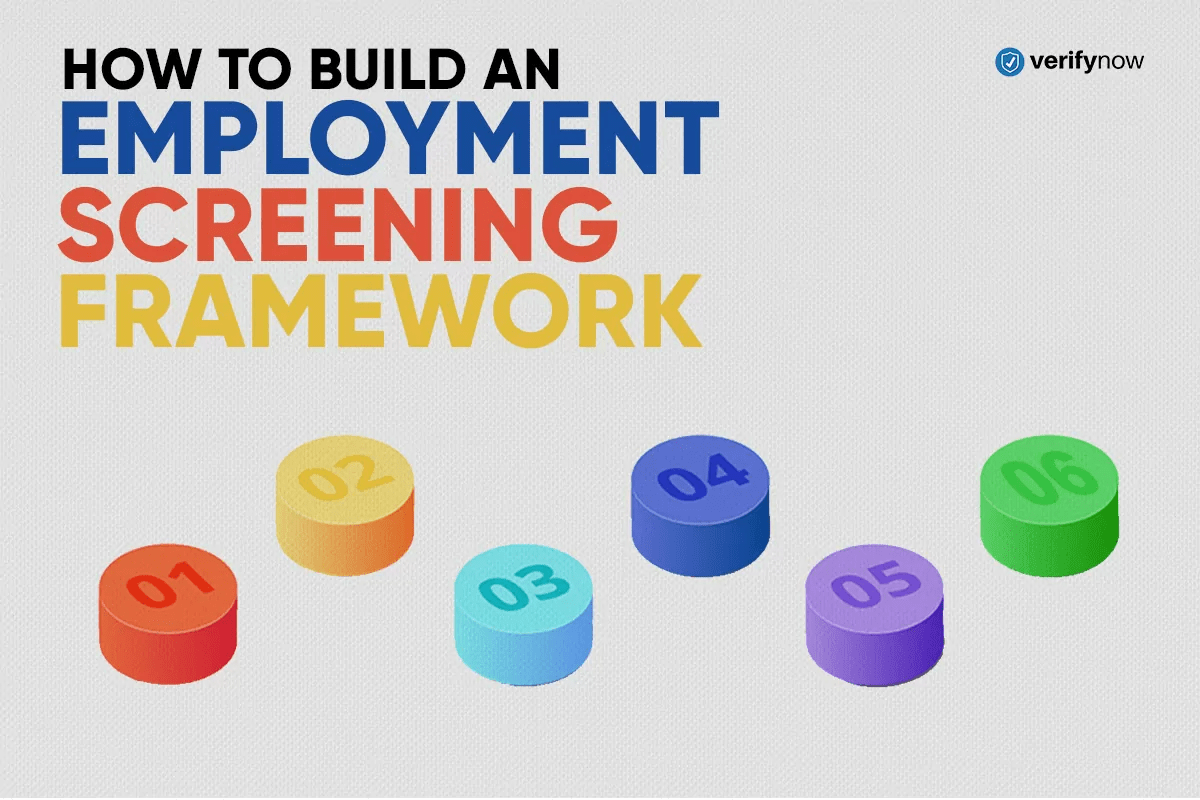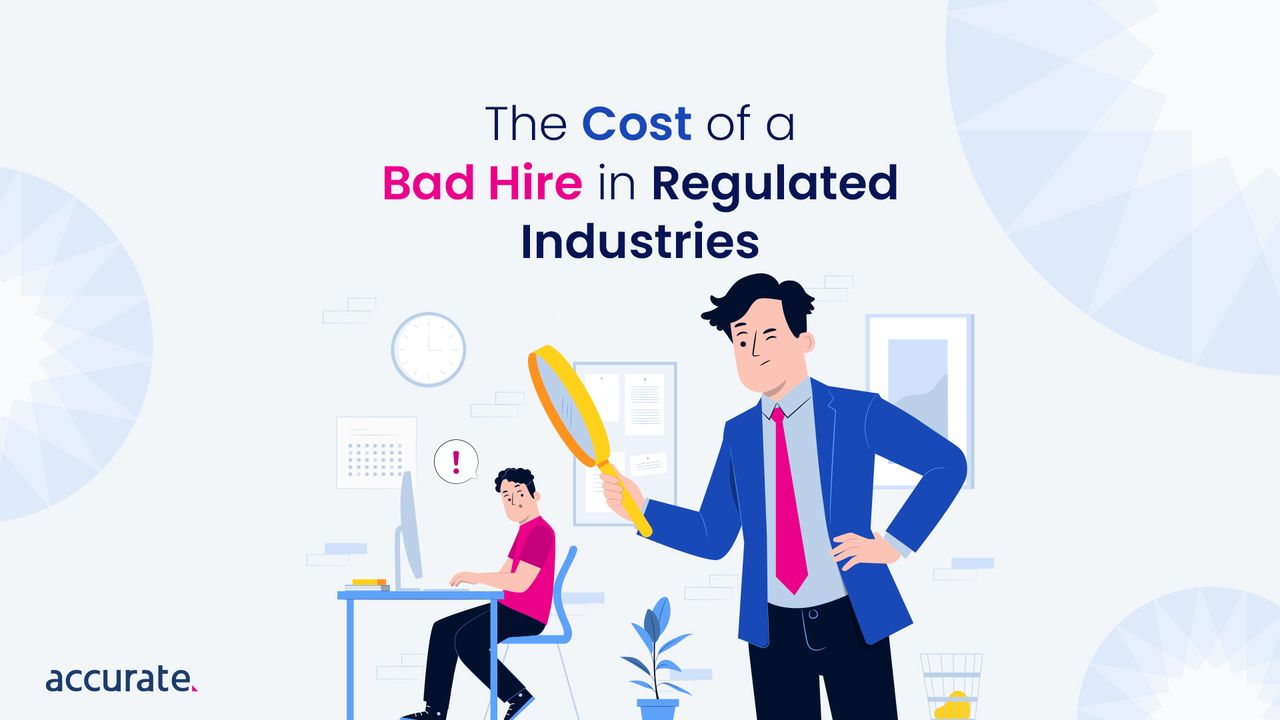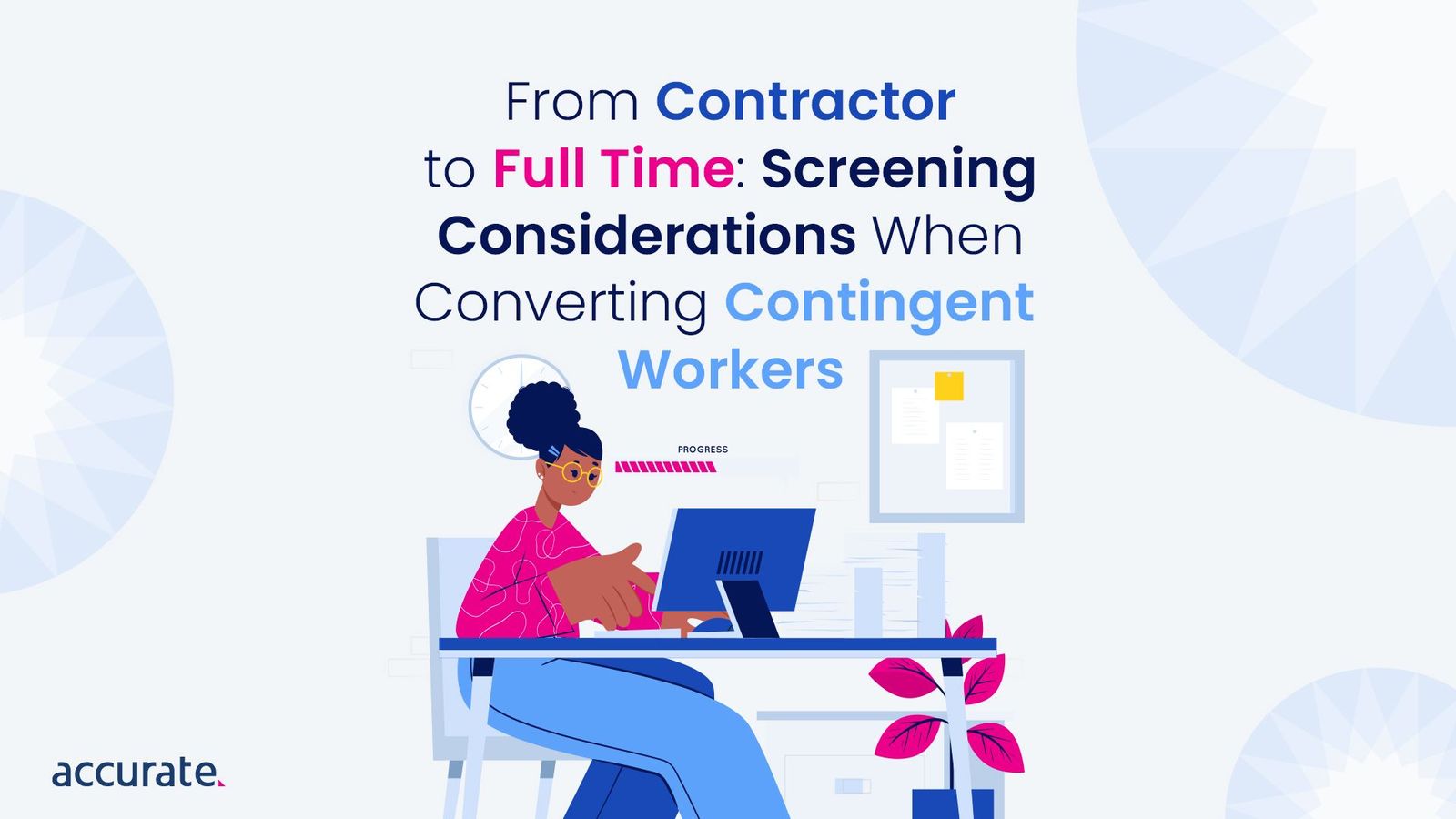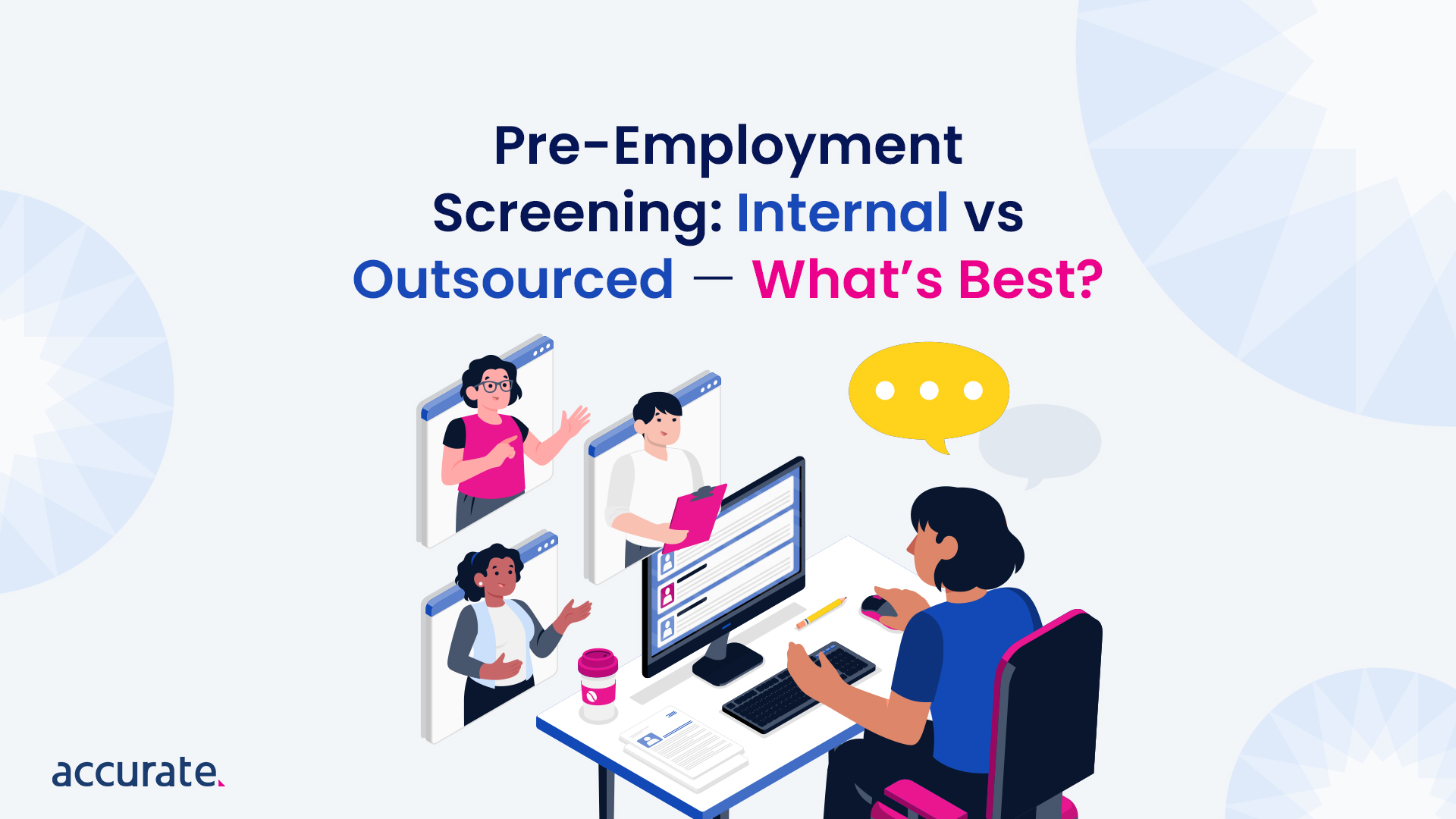In today’s fast-paced business environment, the challenge of hiring the right talent is more complex than ever. Ad-hoc methods of screening applicants no longer suffice as organisations need to ensure that their employment screening process is managed well and compliant with regulations.
So, what’s the solution?
The answer lies in establishing a comprehensive employment screening framework—a policy that formalises the details of your company’s screening process. This framework is crucial for ensuring consistency, user experience, and compliance in your hiring process.
Why is this important?
An employment screening framework dictates your employment screening requirements and approach. It outlines exactly who is going to do what screening for what reasons using which processes. It also covers topics such as review procedures, data storage, and screening management.
Disclaimer: The contents of this article do not constitute legal advice, are not intended to be a substitute for legal advice, and should not be relied upon as such. You should seek legal or other professional advice in relation to any particular matters you or your organisation may have.
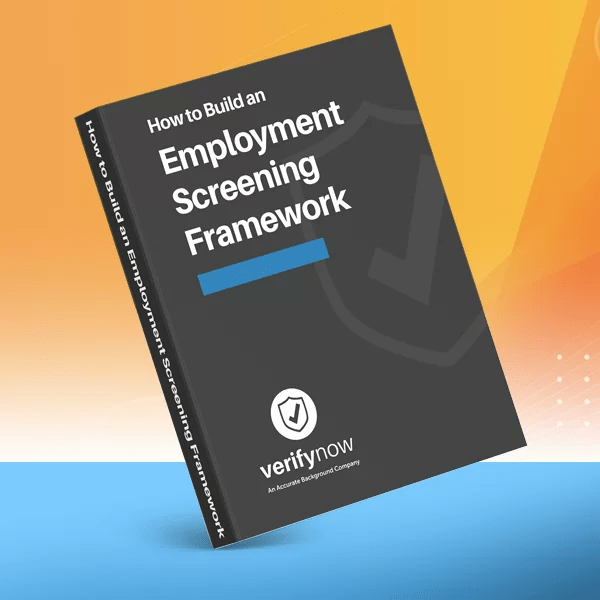
Download your Framework Guide + FREE Policy Template
This blog article provides a high-level summary of the key considerations for developing your own employment screening framework.
For a comprehensive guide with a FREE policy template included to get you started, click the button below.
Benefits of a Screening Framework
Having a strategic employment screening framework in place brings multiple advantages to the recruitment process.
1. Finding the Right Cultural Fit
An employment screening framework is not just about assessing skills and qualifications. It’s about understanding the candidate’s alignment with the company’s culture and values. This deeper insight ensures that new hires will not only contribute effectively to their roles but also become integral parts of the team.
2. Reducing Hiring Mistakes
Mistakes in hiring can be costly, both in terms of time and resources. A well-structured screening framework minimises these risks by providing a systematic approach to evaluating candidates. It’s like having a roadmap that guides you to the right destination, avoiding unnecessary detours and dead ends.
3. Saving Time and Money
Time and money are precious commodities in any organisation. An effective screening framework streamlines the hiring process, allowing HR professionals to sift through candidates more efficiently. It’s not about cutting corners; it’s about optimising the process to find the best talent without unnecessary expenditures.
4. Ensuring Fairness in the Hiring Process
Fairness is the cornerstone of any reputable organisation. A robust screening framework ensures that every candidate is evaluated on the same criteria, minimising biases and inconsistencies. It’s a commitment to equality that reflects well on the company’s integrity and ethics.
5. Enhancing the Company’s Reputation
A company’s reputation is often reflected in its hiring practices. An employment screening framework that is transparent, fair, and effective sends a positive message to potential candidates and the industry at large. It’s a statement that the company values quality and professionalism, not just in its products or services but in its people.
Components Of A Screening Framework
Each component within the framework serves a specific function, contributing to the overall efficacy and integrity of the hiring process.
Profiles: Tailoring Checks for Different Roles
Employment screening requires a tailored approach for different roles within an organisation. Here’s how to create profiles that guide the background checks:
- Balancing Act: Compliance, due diligence, and privacy must be carefully balanced. The right level of scrutiny ensures thorough checks without overstepping privacy boundaries.
- Risk Analysis: Understanding the potential risks and responsibilities of each position is crucial in determining the appropriate checks. It’s about crafting a process that’s relevant to the role.
- Role-Specific Profiles: Creating profiles for each role ensures that the right checks are used for the right positions. These profiles act as reference points, aligning the screening process with the specific needs of each job.
- Flexibility in Hiring: Well-defined profiles allow for adaptability in each hiring instance. They recognise the unique demands of each position and ensure that the screening process is aligned accordingly.
People: The Human Element of the Screening Process
In the employment screening framework, the “who” is as crucial as the “what” and “how.” Identifying the right individuals to carry out the checks and oversee the process is key.
Here’s what to consider:
- Selecting the Right Individuals for Checks: Who will be conducting the background checks? Depending on the nature of the checks, these individuals may be exposed to personal information about a candidate. If they’ll be working with the candidate once onboarded, this exposure is particularly relevant. It’s like entrusting someone with a key; you need to ensure they’re the right person for the task.
- Vetting the Checkers: Ironically, the people carrying out the checks need to be checked themselves. Ensuring that they have been sufficiently vetted adds a layer of trust and integrity to the process. It’s not just about their ability to perform the task but also their ethical standing and reliability.
- Monitoring and Oversight: Who will be responsible for monitoring the functioning of the employment screening framework? Who will make changes to meet compliance or improve processes? This role requires a keen eye for detail and an understanding of both legal requirements and organisational needs. It’s like having a quality control manager, ensuring that the process is running smoothly and adapting as needed.
- Balancing Privacy and Transparency: The people involved in the screening process must balance the need for privacy with the requirement for transparency. Handling sensitive information requires discretion, while maintaining an open and transparent process ensures fairness and compliance.
Processes: Aligning with Recruitment Strategy
The employment screening process may seem straightforward at first glance, but it involves a series of intricate steps that must be handled with precision. Here’s a breakdown of the key stages:
| Stage | Description |
| Gathering Information from the Applicant | The first step involves collecting the necessary information from the candidate. The information will be shared with relevant third parties, such as the Australian Criminal Intelligence Commission (ACIC) or the Australian Federal Police (AFP), and must be provided in specific formats. |
| Providing Information to Relevant Authorities | Once gathered, the information must be submitted to the appropriate agencies for background checks. |
| Receiving and Processing Information | After the checks are carried out, you will receive information back, such as a Disclosable Court Outcome (DCO). Deciding how to process, store, and act on these findings is a critical part of the process. It’s not just about receiving the data it’s also about understanding what it means and how it impacts the hiring decision. |
| Communicating or Acting on Findings | Any significant findings must be communicated or acted upon appropriately. It may involve internal discussions, further enquiries with the candidate, or even reconsideration of the hiring decision. |
While handling it in-house is an option, utilising specialised services and platforms, like Accurate Australia, can add efficiency and reliability to the process.
Storage: Safeguarding Private Data
When collecting information for background checks, secure storage is essential. Consider the following factors:
- Access Control: Determine who has access to the digital or physical storage of files.
- Legal Requirements: Understand the legal obligations regarding privacy and personal information management, as outlined by the Office of the Australian Information Commissioner.
- Australian Privacy Principles (APP) Guidelines: If governed by APP guidelines, adhere to specific storage requirements. If unsure, read this article.
- Non-APP Entities: Know the differences in storage protocol if you are not an APP entity.
- Security Protocols: Develop suitable security measures to protect the information.
These considerations ensure that your storage framework complies with legal and ethical standards, safeguarding the information collected during the employment screening process.
Review: Assessing Results and Ensuring Fairness
We discussed this as part of the screening process, but it’s worth highlighting again. Once the necessary checks are conducted and the information is shared with relevant stakeholders, you need to review the information in light of the role you’re hiring for.
For example, a police check might return a Disclosable Outcome (DCO), indicating a record for the applicant. However, the presence of a record doesn’t necessarily imply its relevance to the role you’re hiring for.
So, let’s say you’re hiring for a position in finance. In that case, a minor traffic violation may not be a deciding factor as to whether the applicant will meet the job’s requirements.
The seniority of the role also plays a part in the review process. If you’re hiring for a senior leadership position, you might need to send the information gathered from your screening directly to the board of directors, bypassing mid-level managers or administrators.
So, you need to establish how the review process fits into the framework as a whole.
Here are some ideas for what you could include:
- Designate someone qualified to review results and interpret them accurately.
- Establish clear guidelines for decision-making in the event of adverse results.
- Conduct thorough risk assessments to determine the best course of action.
- Communicate the process transparently to candidates and provide avenues for dispute resolution.
Management: Ownership and Compliance
Once your employment screening framework is operational, you need to designate who will be responsible for its ongoing management.
Why is this important?
Because the landscape of employment screening is dynamic. Legislation evolves, best practices for screening shift, and supplier reviews may lead to changes in your service providers.
So, you should assign a team or an individual to:
- Oversee the entire process
- Regularly review and update all aspects of the framework
- Ensure compliance with changing legislation
- Align the framework with the organisation’s evolving needs
Key Takeaways
Does your organisation have an employment screening framework?
If not, here are some key takeaways:
- Profile: How do you assess the risk profile of a role to determine the screening requirements?
- Process: What are the steps required for each check, and when do these steps take place within the wider recruitment process? After the offer or before?
- People: Who is going to carry out the checks? Who screens the screeners?
- Storage: Where is the personal data stored that is collected during a screening check? How long is it retained? How is it transferred? And who is responsible for deleting it?
- Review: Who will be responsible for reviewing the results of a background check, and what will the process be if there are adverse findings?
- Management: Who is responsible for this framework?
One of the advantages of partnering with a trusted third-party provider like Accurate Background is the assurance of staying updated on all the latest developments in the employment screening industry.
Contact us today to find out more about how we can help you strengthen your framework.

Download your Framework Guide + FREE Policy Template
This blog article provides a high-level summary of the key considerations for developing your own employment screening framework.
For a comprehensive guide with a FREE policy template included to get you started, click the button below.
